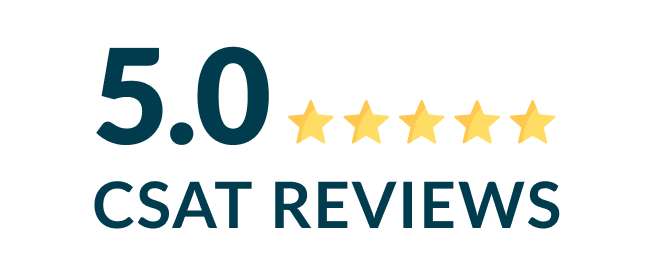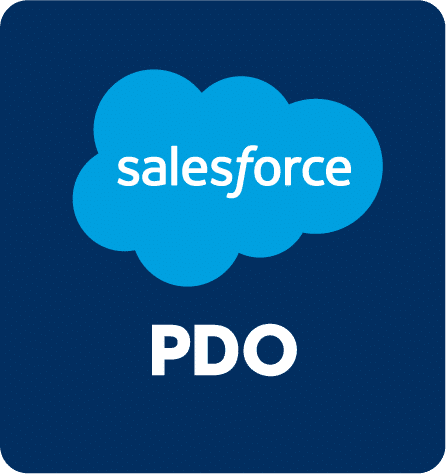
Salesforce vs Zendesk: Switch or Stay? Expert Breakdown
Salesforce and Zendesk offer more than just different features—they create distinct business impacts. While companies that switch to Zendesk might save $250,000 yearly on license fees, Salesforce packs a punch with its massive ecosystem of 7,000 apps. Keep their users happy with stellar ratings – 4.4 and 4.3 out of 5. Making the switch or merging these platforms isn’t always easy. Zendesk stands out with its quick setup time of 3-6 months. Although Salesforce takes longer at 6-12 months, the long-term benefits of superior customization, integration, and innovation far outweigh the initial speed advantage.
Let’s get into what sets these customer service giants apart. This will help you figure out if you should merge them or switch completely. We’ll break down everything from costs to setup challenges that will guide you toward the right choice for your business.
Salesforce Service Cloud vs Zendesk: Core Platform Differences
The architecture behind every customer service platform defines what it can and cannot do. A closer look at Salesforce Service Cloud and Zendesk reveals why companies struggle to integrate or migrate between these platforms.
User Interface and Experience Comparison
Salesforce Service Cloud takes a different approach. Salesforce Service Cloud offers powerful customization options but comes with complexity. Teams need developer expertise and detailed training to employ its full capabilities. Once everything is set up correctly, the initial complexity pays off with needed customization options.
Zendesk takes a different approach and puts user experience first with its easy-to-use platform that needs minimal training. Teams can configure it with simple point-and-click options, which reduces IT dependence. User ratings show it’s 26% easier to use than Salesforce Service Cloud. Teams can start working right away thanks to its clean design and quick onboarding process.
Pricing Structure and Total Cost of Ownership
Salesforce Service Cloud’s pricing, at $25 to $330 per user monthly, reflects its advanced capabilities and 360-degree support for large-scale operations—appealing to small and big businesses. Zendesk’s pricing ranges from $19 to $99 per agent monthly, which appeals to small and medium businesses.
Although initial research suggests Zendesk has lower upfront costs and quicker deployment, Salesforce offers superior long-term value through its extensive customization, robust integrations, and vast ecosystem of apps. Companies investing in Salesforce is not just about paying a premium—it’s about securing a platform that scales with your business, delivers consistent innovation, and ultimately drives greater ROI over time.
Customer Support Capabilities
Salesforce Service Cloud uses “cases” instead of tickets and features AI-powered routing. The platform scores 8.9 for user role management and gives precise control over permissions. Salesforce’s strength lies in its deep integration with its CRM ecosystem, which creates a complete customer view. Choosing Salesforce Service Cloud means investing in an all-in-one solution that transforms customer support into a competitive advantage.
Zendesk brings together ticketing from email, chat, social media, and voice communications. The platform’s ticketing system earned an 8.8 score for user experience. Its automated triggers and routing features help streamline workflow management effectively.
Integration Ecosystem
Both platforms excel at integrations but in different ways. Salesforce offers access to over 7,000 apps through its AppExchange and seamlessly connects with all Salesforce products. This integrated “Customer 360” approach brings sales, marketing, and service teams together on one platform.
Zendesk connects with over 1,000 pre-built integrations for popular business apps and platforms. This service-first approach works well with Salesforce’s CRM focus when companies use both systems together.
When Integration Makes More Sense Than Switching
Organizations often reach a turning point while evaluating their customer service technology stack. The strategic choice lies in integrating Zendesk with Salesforce rather than completely switching platforms, especially for businesses that have long-term Salesforce deployments.
Making Use of Existing Salesforce Investments
Companies that built their business processes around Salesforce can benefit from Zendesk integration. Zendesk’s position as an official Salesforce ISV partner has led to resilient connection capabilities. This strategic collaboration allows companies to keep their Salesforce investment while adding Zendesk’s specialized support features.
The integration path makes sense for teams that know Salesforce’s ecosystem well. A successful Salesforce setup takes 6-12 months, so keeping this investment through integration proves more economical than starting from scratch.
Creating a Unified Customer View Across Platforms
A proper integration builds a detailed customer profile that neither platform can create alone. Support agents can access vital Salesforce data right in their Zendesk interface. They can view Salesforce objects and records next to live support tickets, which leads to more individual-specific service interactions.
Sales teams also get a clear view of service issues without switching from Salesforce. Sales representatives can:
- Work together on tickets directly from Salesforce
- Access detailed customer interaction histories
- Spot upsell opportunities based on support interactions
This two-way visibility helps both teams work better by providing context that was previously trapped in separate systems.
Integration Options and Architecture
Different integration approaches exist based on technical needs. The official Zendesk for Salesforce integration links Salesforce accounts to Zendesk accounts and enables ticket management right inside Salesforce. This native integration works smoothly in both Salesforce Lightning and Classic interfaces.
API-based integration offers more flexibility for organizations that need custom workflows, though it needs more technical expertise. No-code integration options through third-party connectors like Zapier or Workato provide alternatives.
The right integration taps into automation potential across both platforms. Teams can set up workflows that sync Salesforce accounts, contacts, and cases with Zendesk organizations, users, and tickets. This synchronization keeps both systems updated with the latest customer information.
When Switching Platforms Is The Better Choice
A company’s perfect solution today might become tomorrow’s bottleneck. Many businesses reach this turning point with Zendesk. They find that moving completely to Salesforce Service Cloud works better than just connecting the two systems.
Signs Your Team Has Outgrown Your Current Solution
Your business might need to move away from Zendesk. The first red flag appears when Zendesk struggles to connect different channels and back-end systems. The platform seems easy to set up at first. Yet companies soon notice its limits as their needs grow:
- The platform’s customization limits stop you from adapting to new requirements
- You face challenges connecting with ERP, payment systems, or partner platforms
- Getting consistent metrics across your company becomes hard
Zendesk makes setup quick and simple. However, companies with complex customer service needs get better results by switching to Salesforce Service Cloud.
Cost-Benefit Analysis of Platform Migration
Salesforce costs more upfront, but the long-term financial rewards make the switch worthwhile. Companies that make this change see their agent’s efficiency jump by 24% and customer satisfaction rise by 28%. The switch to Salesforce Service Cloud brings more benefits:
- Case deflection rates climb to 30% after setup
- Data integration becomes 25% more efficient
- Combined platform costs lead to strong returns
The investment pays off through simpler operations. Companies also spend less on maintaining multiple systems.
Customer Satisfaction Impact Assessment
Better customer experience stands out as the best reason to switch platforms. Companies see their CSAT scores improve by 10% after the move. Salesforce’s detailed analytics help businesses understand their customers’ behavior better.
Companies that switch from Zendesk to Salesforce deliver more customized service. The unified view of customer data makes this possible. Before switching, companies struggle with fragmented service experiences. The combined platform lets service agents see complete customer histories. This leads to more meaningful and satisfying customer interactions.
The choice to switch depends on one simple question: Can your current solution grow with your goals? If not, Salesforce’s enterprise-grade features might be the key to reaching your customer satisfaction targets.
Conclusion
Making a choice between Salesforce Service Cloud and Zendesk needs a good look at your business needs, resources, and future plans. Zendesk lets you get started quickly and at a lower cost, with yearly savings reaching $250,000. Salesforce Service Cloud shines with its customization options and connects well with its huge network of over 7,000 apps.
Businesses that already use Salesforce will get better results by adding features rather than switching to a new platform. This way keeps their current setup intact while bringing in Zendesk’s special support tools. Many growing companies see Salesforce Service Cloud’s strong enterprise features as worth the full switch, especially if they need deep customization and better analytics.
Your specific business needs will determine the best choice. Smaller and mid-sized companies might prefer Zendesk’s easy-to-use setup and quick launch. Larger enterprises usually do better with Salesforce’s detailed features and wide range of customization choices. Advayan helps companies through this change with specialized Salesforce services that match each business’s unique needs.
These platforms keep getting better. The key to success is finding a solution that lines up with your company’s goals, tech skills, and customer service plans. Taking time to evaluate carefully will give you a platform that works now and grows with your business.







